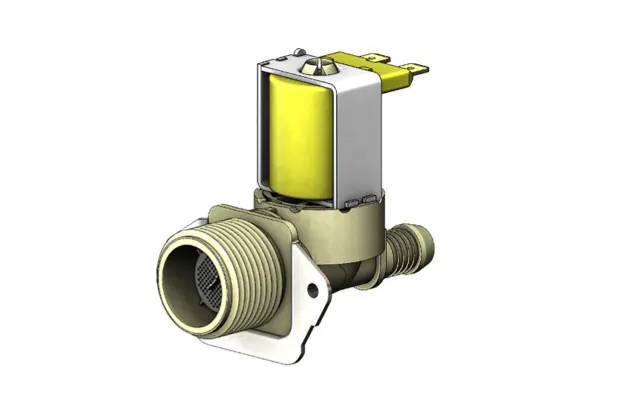Fluid flow control and regulation play a crucial role in numerous industrial processes. To achieve effective control, the utilisation of appropriate valves is essential. Among the available options, Solenoid valves are significant in automating, regulating, and ensuring safety in multiple systems. These electromechanical devices come in various types, each tailored with distinct features and functions to cater to diverse applications.
In this article, you can explore these valves’ various types, functions, and applications across industries.
On-Off: It is the simplest type and has open and closed states. When the solenoid is energised, it opens, allowing fluid or gas flow. Conversely, when it is de-energised, it closes, stopping the flow.
It is widely used in applications where basic control is sufficient and precise regulation is not required. It is cost-effective and reliable, making it suitable for water supply, irrigation, and pneumatic control systems. The simplicity of their design and operation makes integrating into various industrial processes easy.
Direct-Acting: It is simple and commonly used in applications requiring quick response and relatively low flow rates. It consists of a plunger or a piston that is being directly controlled. When energised, the plunger or piston is pulled or pushed, opening or closing it, respectively.
It is ideal for applications with low to medium-pressure requirements, such as irrigation systems, small-scale pneumatic systems, and domestic appliances. Its compact size, quick response time, and simplicity make it widely used in various industries.
Pilot-Operated: It is used in applications with high flow rates or high-pressure differentials. It consists of a smaller pilot and a main valve. This design allows for efficient control of large flows or pressures.
It is found in oil and gas, chemical processing, and power generation industries. It is used in systems requiring precise control of flow rates, such as controlling the flow of gases in large-scale pipelines or regulating the flow of liquids in industrial processes.
Normally Closed: It is designed to be closed when the solenoid is de-energised. It opens only when it is energised, allowing the flow of fluid or gas. This design ensures the system’s safety by automatically shutting off the flow when power is interrupted.
It is commonly used in applications where safety and reliability are critical, such as in gas systems, fuel shut-off valves, and emergency stop systems. Its fail-safe nature and ability to quickly close in case of power failure make them essential components in various industries.
Normally Open: It is the opposite of NC. It is designed to be open when the solenoid is de-energised, allowing fluid or gas flow. It closes only when it is energised, interrupting the flow.
It is found in systems applications where continuous flow is required until an electrical signal is received. It is commonly used in applications such as air compressors, pneumatic systems, and automated process control.
Proportional: It provides precise control over flow rates by allowing variable opening positions. It is designed to modulate the flow of fluids or gases at different levels, depending on the input signal or electrical current applied.
It is widely used in industries requiring precise control, such as HVAC systems, medical equipment, and industrial automation. Its ability to regulate flow rates with high accuracy and responsiveness allows for efficient and precise control of various processes.
Conclusion:
Solenoid valves are versatile devices used in various industries to control the flow of fluids and gases. Direct-acting, pilot-operated, normally closed, normally open, and proportional offers specific functions and features to suit various applications. Understanding the different types is essential for engineers and designers to select the most suitable one for their particular needs, ensuring efficient and reliable operation of their systems. Whether for irrigation, power generation, safety systems, or precise control, they play a critical role in numerous industrial applications.


